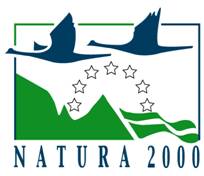About Plant Micro-Reserves
The Plant Micro-Reserves (PMR) constitute a relatively recent concept and a novel approach for the conservation and management of plant populations of threatened and rare species. The PMR concept was first developed around 1990, in the Region of Valencia (Spain) by Emilio Laguna and was originally put into practice in 1994 within the framework of an EU-funded LIFE project.
PMRs are legally defined areas of a small surface (less than 20 ha) which, ideally in the form of a network, aim (1) to protect a selected sample of each of the main populations of the rarest, endemic or most threatened species and at the same time (2) establish a continuously monitored network in order: to achieve a representation of plant biodiversity richness, to facilitate understanding of the long-term changes of endemic-rich or relict plant communities, to provide germplasm to the regional, wild plant seedbanks, and to develop into focal points for the ongoing, plant conservation activities (re-introductions, reinforcements, translocations, in situ management etc.). Such a patchy network of small protected areas should be considered as a tool complementary to the generally adopted «large site» strategy that has recently materialised into the European Network of nature conservation, NATURA 2000.
During the past decade, the PMR concept has received a wide recognition and appreciation throughout the European continent; however, apart from the extended network currently deployed in Valencia, PMRs are only scarcely implemented in other, floristically rich areas.
Apart from the references cited below, please visit:
References
- Deltoro V. et al., 2004. Plant Microreserves: frequently asked questions. Proceedings 4th Planta Europa Conference, September 17-20, 2004, Valencia, Spain.
- Deltoro V., 2004. Plant microreserves the site-based plant conservation and monitoring network. 4th Planta Europa Conference (European Conference on the Conservation of Wild Plants), 17-20 September 2004, Valencia, Spain.
- Draper D. et al., 2004. Definition of a micro-reserve for endangered Narcissus cavanillesii in Portugal. Proceedings 4th Planta Europa Conference, September 17-20, 2004, Valencia, Spain.
- Fraga P., Estaun I., Juaneda J., 2004. Selection criteria for a future network of plant microreserves areas in Minorca. 4th Planta Europa Conference (European Conference on the Conservation of Wild Plants), 17-20 September 2004, Valencia, Spain.
- Kaligaric M. et al., 2004. Conservation of dry grasslands on the edge of Mediterranean basin – a big challenge after changed socio-economic trends. 4th Planta Europa Conference (European Conference on the Conservation of Wild Plants), 17-20 September 2004, Valencia, Spain.
- Laguna E. et al., 2004. The role of small reserves in plant conservation in a region of high diversity in eastern Spain. Biol. Conserv. 119, 421-426.
- Laguna E., 2001. The micro-reserves as a tool for conservation of threatened plants in Europe. Nature and environment, No. 121, Council of Europe Publishing.
- Laguna E. et al., 2001. Valencian micro-reserves experience. A practical approach managing small protected natural areas.
- Laguna E., 2007. Micro-reserves, consolidated experience from the Valencian Community (Spain). ENSCONEWS 2, 12-13.
- Motiekaitytė V., 2006. Conservation diversity of vascular plants and their communities in situ, applying the conception of ecosystem pool. Ekologija 2, 1-7.
- Salmiņa L., Baroniņa V., 2004. Plant Conservation in Latvia. In situ protection mechanisms. 4th Planta Europa Conference (European Conference on the Conservation of Wild Plants), 17-20 September 2004, Valencia, Spain.
- Turuta O. et al., 2001. Plant microreserves on Baikal Lake coasts. Proceedings 3rd Planta Europa Conference, June 23-28, 2001, Pruhonice, Czech Republic.
- Turuta O. et al. 2001. Protected microhabitats as a part of Baikal Regional Ecological Network.
- Plant conservation: the dawning of a new era? NATURA 2000, 12, 8-10, Sep. 2000.
- Micro-reserves 'capture' Valencia's special flora. Plant Talk 14, 1998.
- Managing plant diversity via the Natura 2000 network. NATURA 2000 23, 7, Dec. 2007.
- Plant micro-reserves: from concept to implementation. LIFE and endangered plants – Conserving Europe’s threatened flora, 17-19, European Commission 2008.





